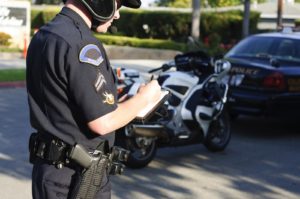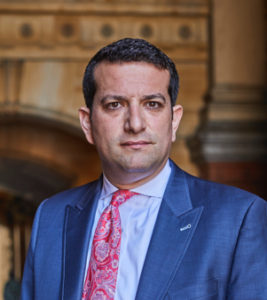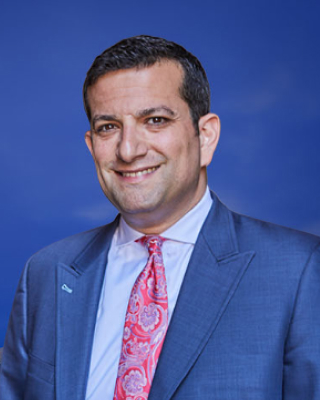Safety Laws and Regulations That Protect Motorcyclists on Pennsylvania Roads
Many drivers, especially ones that ride motorcycles themselves or have loved ones who ride, have bumper stickers reminding other motorists look twice to keep motorcyclists safe. During the spring and summer months, when motorcyclists take to Pennsylvania roads, that advice takes on added importance. No Pennsylvania law specifically requires drivers to look twice for motorcyclists (after all, how would police enforce it?), but just the same, we should all still try to follow that advice to keep the roads safe for riders.

Fortunately, laws and regulations designed to ensure motorcyclist safety do exist on the books in the Keystone State. Below, we review those rules and other safety tips for motorists and motorcyclists to share the road safely.
For information about your legal rights after getting hurt in a motorcycling accident, contact an experienced motorcycle accident injury attorney today.
1. Maintain Appropriate Following Distance.
Drivers following a motorcycle (or any other vehicle, for that matter) should always maintain proper following distance. What constitutes a safe following distance varies based on the speed of the vehicles and current road conditions; however, as a rule-of-thumb, at least four seconds should pass before your vehicle reaches a spot on the road that the motorcycle in front of you has just passed.
If you have doubts about your following distance, back off and give the motorcycle more room. Motorcycles can stop quicker than a car or truck, so driving behind one requires extra attention. That additional room might just give you the extra fraction of a second you need to avoid a collision if the motorcycle in front of you stops suddenly.
2. Be Mindful of Motorcycles.
Although the law does not mandate looking twice for motorcycles before changing lanes or turning across oncoming traffic, reminding yourself regularly to look specifically for motorcycles on the road can save lives.
Motorcycles cut a much thinner profile than cars and trucks. This puts them at risk when drivers lose focus or get lazy behind the wheel. Research has shown that our brains can become conditioned to see only larger vehicles on the road, blinding us to motorcycles even when they are right in front of our eyes. To combat this so-called inattentional blindness, periodically remind yourself to look, specifically, for motorcycles on the road with you. You might even say out loud, “There’s a motorcycle.” This small cue activates your brain to continue looking-out for smaller vehicles, and helps to prevent careless car-on-motorcycle collisions when turning or changing lanes.
3. Give Motorcycles the Whole Lane (They Have the Right to It!).
Motorcycles have a right under Pennsylvania law to occupy a whole traffic lane, as if they were full-sized cars or trucks. Never try to share or encroach on a lane beside a motorcycle, as this could cause a catastrophic collision. Motorcycle riders need and deserve as much space on the road as any other motorist to react to changing conditions and traffic patterns. Plus, by taking care to respect the motorcyclist’s right to occupy a full travel lane, you enhance your ability to see them, thereby reducing the risk of an accident.
4. Know Your Vehicle’s Blind Spots.
Basic drivers’ ed teaches us awareness of our own vehicle’s blind spots, but it is never a bad time to brush up on them. Before taking to the road in spring and summer, when motorcycle traffic increases, reacquaint yourself with the size and location of your blind spots. Get a solid feel for where you could lose track of a motorcycle. Some large vehicles, including SUVs and vans, have blind spots large enough to conceal a small car, much less a considerably smaller motorcycle. The more familiar you feel with your blind spots and the shapes and sizes of vehicles that can hide in them, the better your ability to avoid a potentially catastrophic accident with a motorcycle.
Drivers of large vehicles, like big trucks, must exercise even greater caution when sharing the road with a motorcycle. If you drive a big truck, then you likely already know how easily you can lose track of a vehicle in your blind spot. Motorcycles can disappear even faster, and can prove even harder to find again.
5. Do Not Drive Aggressively.
Aggressive driving maneuvers, such as tailgating and weaving through traffic, put motorcyclists in particular at high risk of a deadly accident. Driving aggressively makes it difficult for bikers to predict your behavior on the road, making it more likely that they will also have to make sudden course corrections. In this manner, aggressive driving can lead to a chain of reactions that end in a pile-up.
Do yourself and motorcyclists a favor: take a deep breath behind the wheel and moderate your driving. Nothing good comes from expressing aggression through how you handle your vehicle.
6. Avoid Speeding.
At high rates of speed, the probability of an accident rises dramatically, as does the likely severity of injuries an accident will cause. In other words, the faster you drive, the more your accident risk increases, and the higher the chance someone will die in a crash. Motorcyclists especially see their odds of surviving a collision plummet with every mile per hour increase in the speed of the vehicle that hits them.
So, do yourself and motorcycle riders this favor, too: leave yourself enough time to get to your destination, ease off the gas pedal, and make the road a safer place to drive and ride.
7. Clear Snow and Ice From Your Vehicle.
In Pennsylvania, you must clear your vehicle of ice and snow before hitting the road. While most motorcyclists tend to avoid riding in snowy, icy conditions, some may have no choice but ride even when the weather makes the going difficult. Ice or snow flying off your vehicle can cause a host of dangers for you and the motorcyclists with whom you share the road. Most significantly, they decrease visibility (yours and the motorcyclist’s), and they become potentially deadly projectiles the rider must try to avoid.
Before leaving home with a car roof piled with snow or ice, ask yourself: if I were riding a motorcycle and this hit me in the face, would I survive? If the answer is no (which it most likely will be), take the extra few minutes to scrape your car off.
8. Limit High Beam Use.
High beams can increase your ability to see as a driver, but they also pose a significant risk to other drivers on the road. Motorcycle riders, in particular, can easily get blinded by high beams shining in their eyes. A blinded motorcycle rider will struggle to stay in his lane, which increases his accident risk.
Keep your high beams off unless you need them to navigate a particularly difficult patch of road. If you see any vehicle approaching in the opposite direction, dim your headlights to reduce accident risk, especially for motorcyclists.
9. Watch for Motorcycle Turn Signals, but Also Exercise Caution.
Motorcycle riders should signal well ahead of time when they intend to turn, just like any other motorist. Many of them know that the smaller size of their vehicles and their signals can make it difficult for other drivers to keep track of what they plan to do, which can substantially raise accident risk. Unfortunately, signal lights on motorcycles also do not turn off automatically. Unlike the signals on a car, which usually turn off after you turn the wheel far enough to complete the turn, motorcycle signals may continue blinking. The rider may not recognize that the signal remains on.
Pay attention to signal lights and respond appropriately. If you see a biker signaling to turn, back off and allow enough room for the motorcycle to complete that maneuver. Pay attention to the possibility that the motorcyclist may have forgotten to turn off the signal, so do not automatically assume that a biker will turn. If you see a motorcycle with its blinker on approaching an intersection where you intend to turn, avoid turning until the biker has committed to the turn to help prevent accident risk.
10. Watch for Signs of a Motorcycle Slowing.
Bikers do not always hit (or squeeze) the brakes to come to a stop. Many slow down by easing off the throttle and/or by downshifting, instead. As a consequence, other motorists cannot always rely on motorcycle brake lights to warn them of a slowing motorcycle. Instead, they must leave adequate following distance to ensure they notice when the gap between their vehicle and a motorcycle ahead starts to close.
11. Exercise Care When Turning Left.
For all of the reasons discussed above, all drivers should take extra care when turning left. A motorcycle may hide in your blind spots. You may not see a motorcycle approaching from the opposite direction. Take the extra time to look twice for motorcyclists before every left turn. Taking an extra moment to look for motorcyclists could prevent a collision and save a life.
12. Avoid Changing Lanes or Turning Across a Group of Bikers.
Bikers often get together for rides in large groups, especially when they tour country roads throughout Pennsylvania. Those bikers need to see other members of their groups. For that reason, try not to cut into the middle of a group of bikers. Instead, signal your need to change lanes and wait for someone to make space for you. Sometimes, that may mean speeding up or slowing down to get around a group. In other cases, the bikers may choose to make room for you. Allow adequate room for those maneuvers, and be respectful if bikers prefer to stick together in a pack on the road for safety and to keep track of each other.
13. Avoiding Doorings by Practicing the Dutch Reach.
Believe it or not, car and truck doors constitute a significant hazard for motorcyclists. Specifically, motorcyclists (and bicyclists, too) always face a risk of someone in a parallel-parked vehicle opening a door directly into the motorcyclist’s path. With no time to stop, the rider collides with the open door and goes flying over the handlebars.
Fortunately, you can prevent doorings with a very simple behavioral change. It’s called the Dutch Reach (named after a law in the Netherlands requiring its practice), and it’s very simple. When opening your car door, reach for the handle with your inside hand, across your body. That simple adjustment forces you to turn your shoulders and head ever-so-slightly, significantly increasing your chances of spotting an approaching motorcycle (or bicycle) coming up on your car from behind.
14. Exercise Extra Caution in Bad Weather.

As we mentioned earlier, most motorcyclists tend to avoid riding in poor weather conditions. Still, some have no choice but to ride in rain, sleet, snow, or fog, such as when their motorcycle constitutes their sole mode of transportation, or when the weather turns on them unexpectedly. Whatever their reasons, bikers run higher-than-normal risks by riding in bad weather. They become even more difficult than usual to see, and their motorcycles can get very difficult to control in slick conditions.
So, do motorcyclists a solid and give them an extra-wide berth when road conditions deteriorate. They probably do not want to be out in messy conditions to begin with. It is the least you can do to give them the space they need in case they start to slide, and can feel comfortable slowing down when they have more room to maneuver.
Consider a Motorcycle Accident Lawyer to Handle Your Case
Sharing the road responsibly keeps everyone safe. All motorists have legal obligations to operate safely, but even when laws do not require extra caution, it helps to exercise it anyway.
If a motorcycle accident harms you or a loved one, you may have the right to receive significant compensation from anyone whose poor decisions or dangerous actions put you or your loved one in harm’s way. However, you must act quickly, because the law also limits your time to take legal action. Contact an experienced motorcycle accident injury attorney right away to learn more.
The Levin Firm Personal Injury Lawyers
1500 John F. Kennedy Blvd,
Two Penn Center, Suite 620
Philadelphia, PA 19102
215-825-5183
